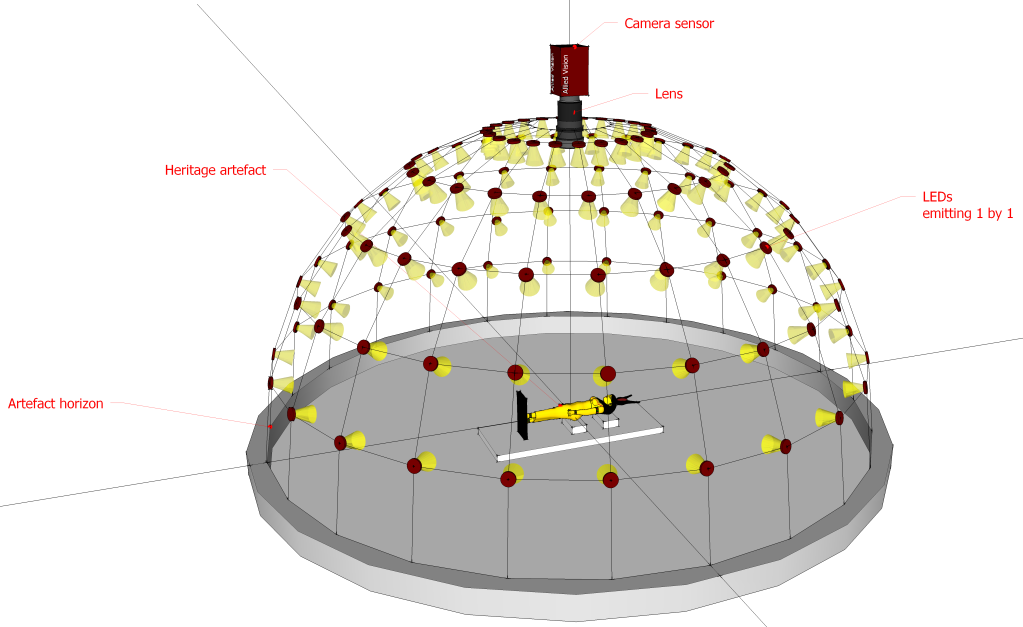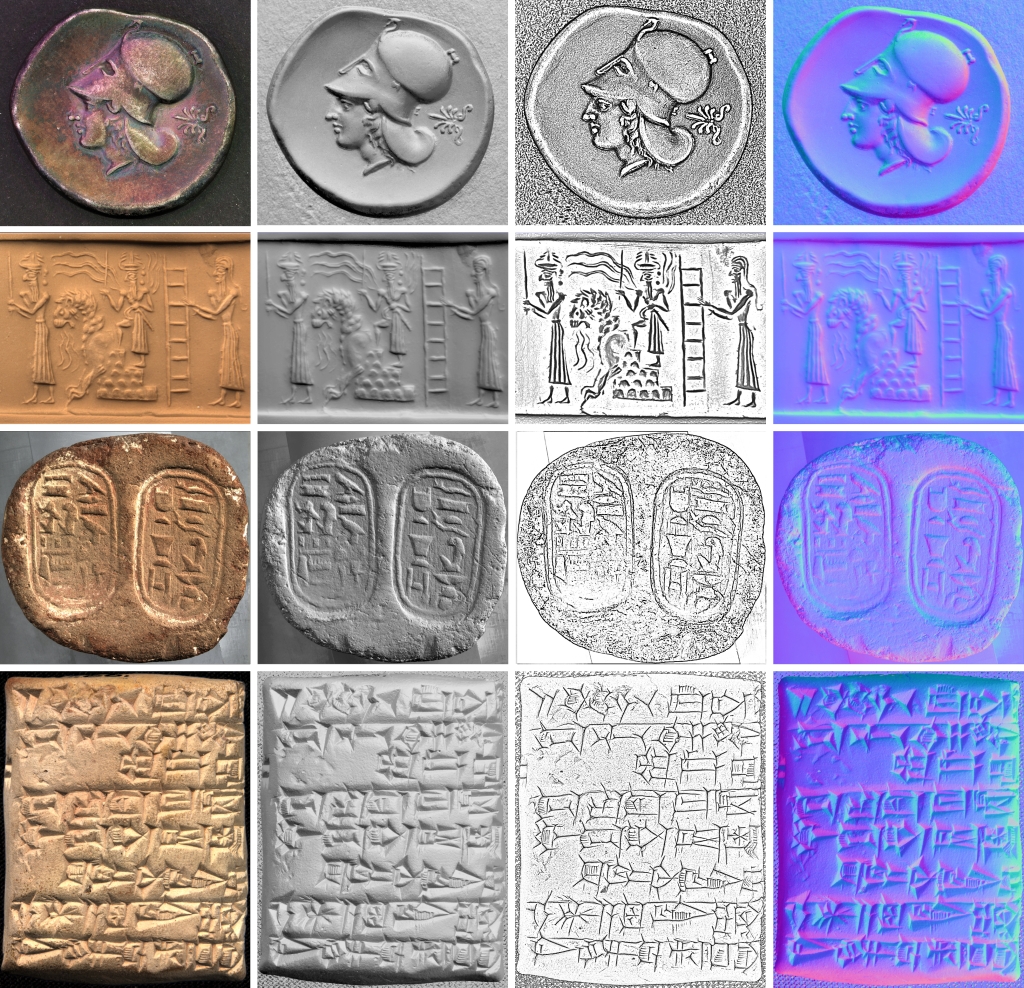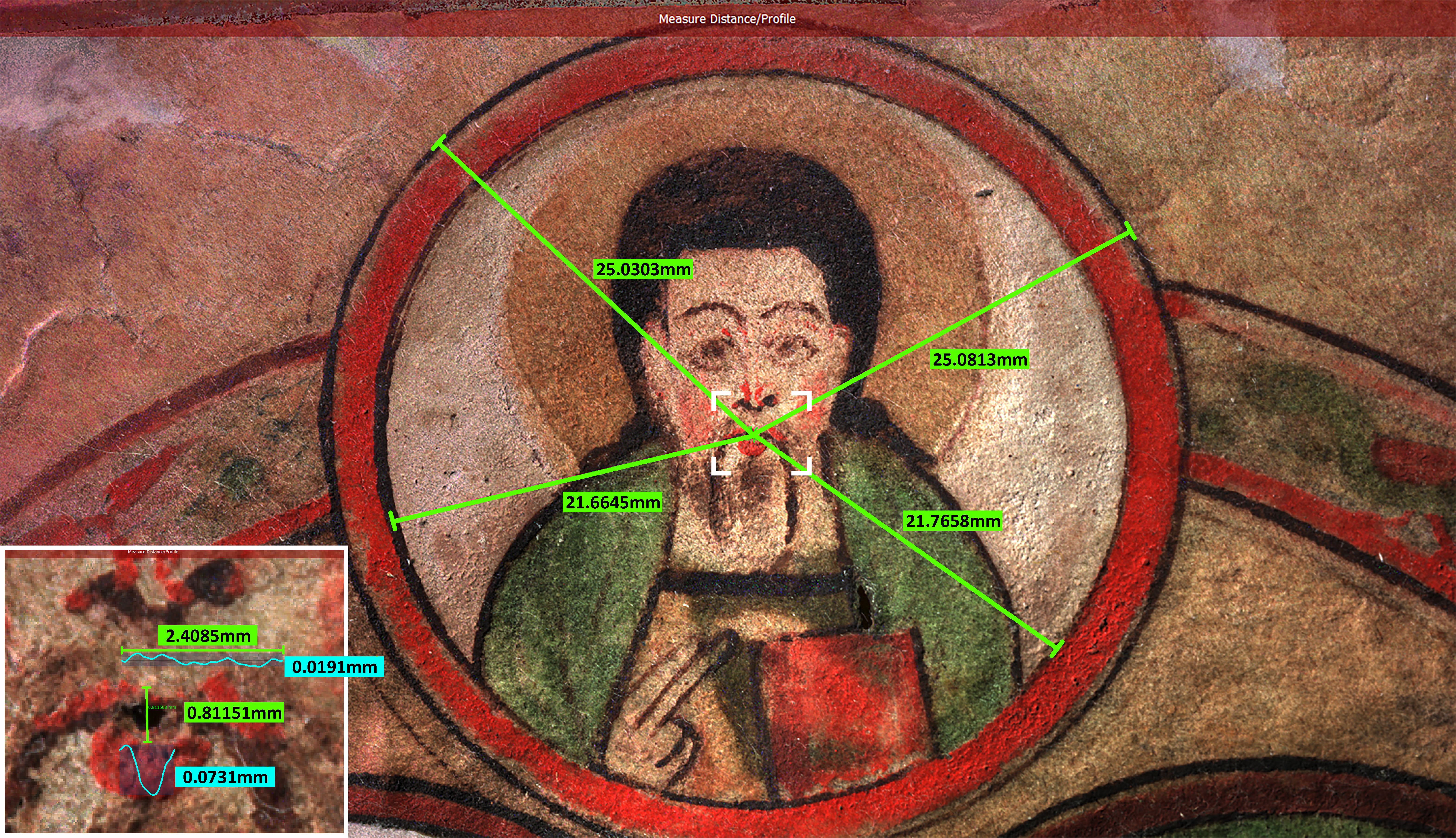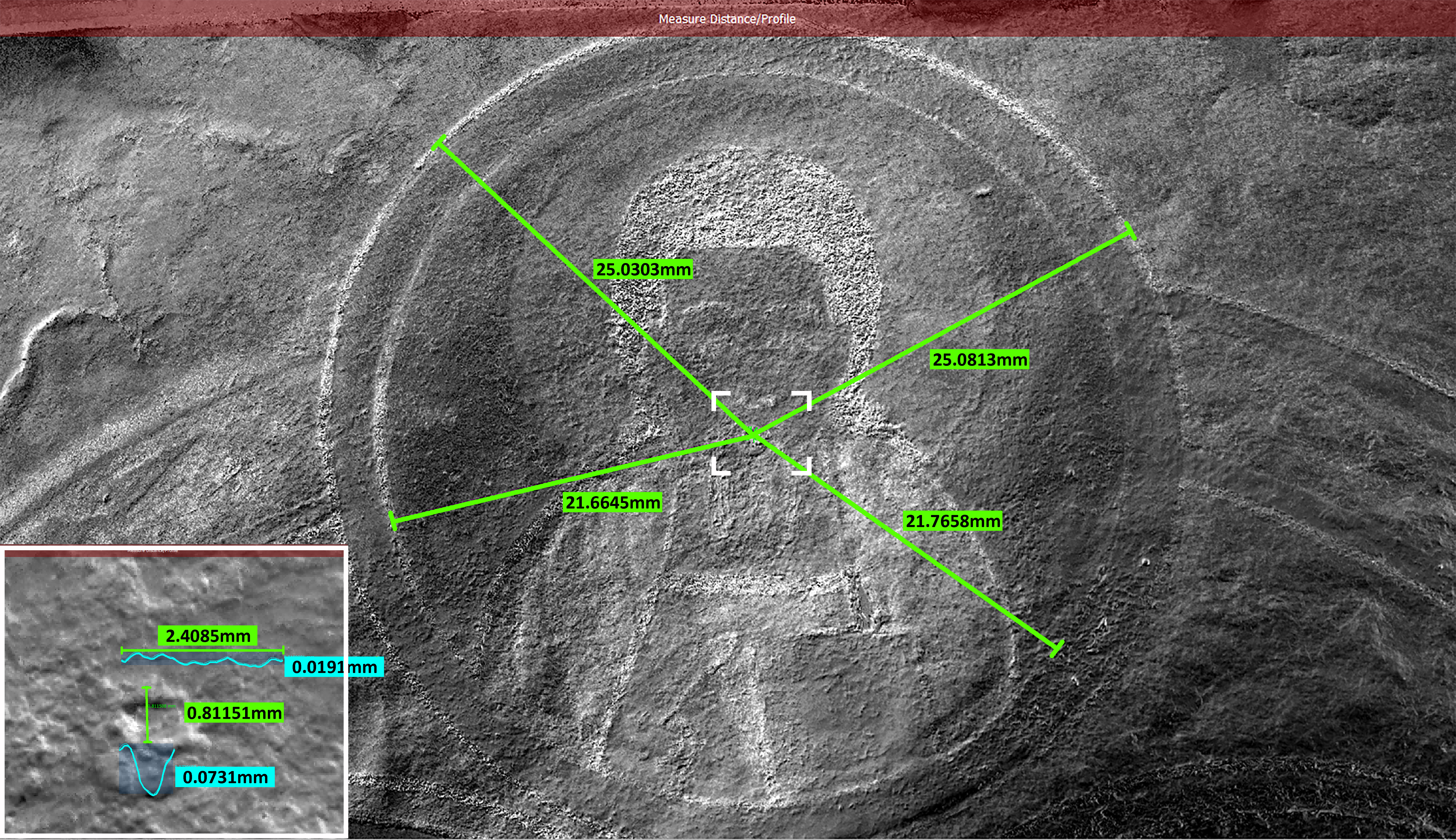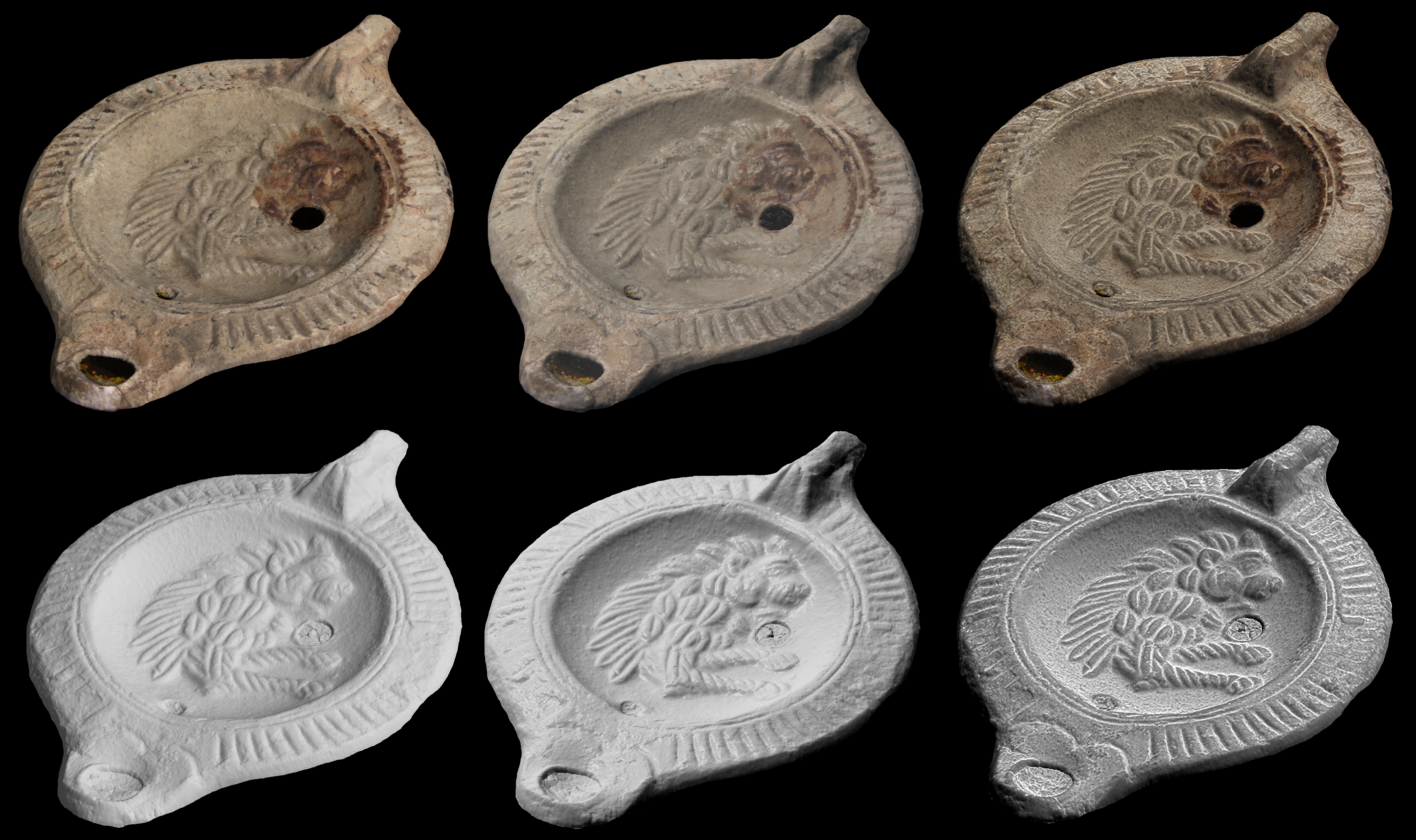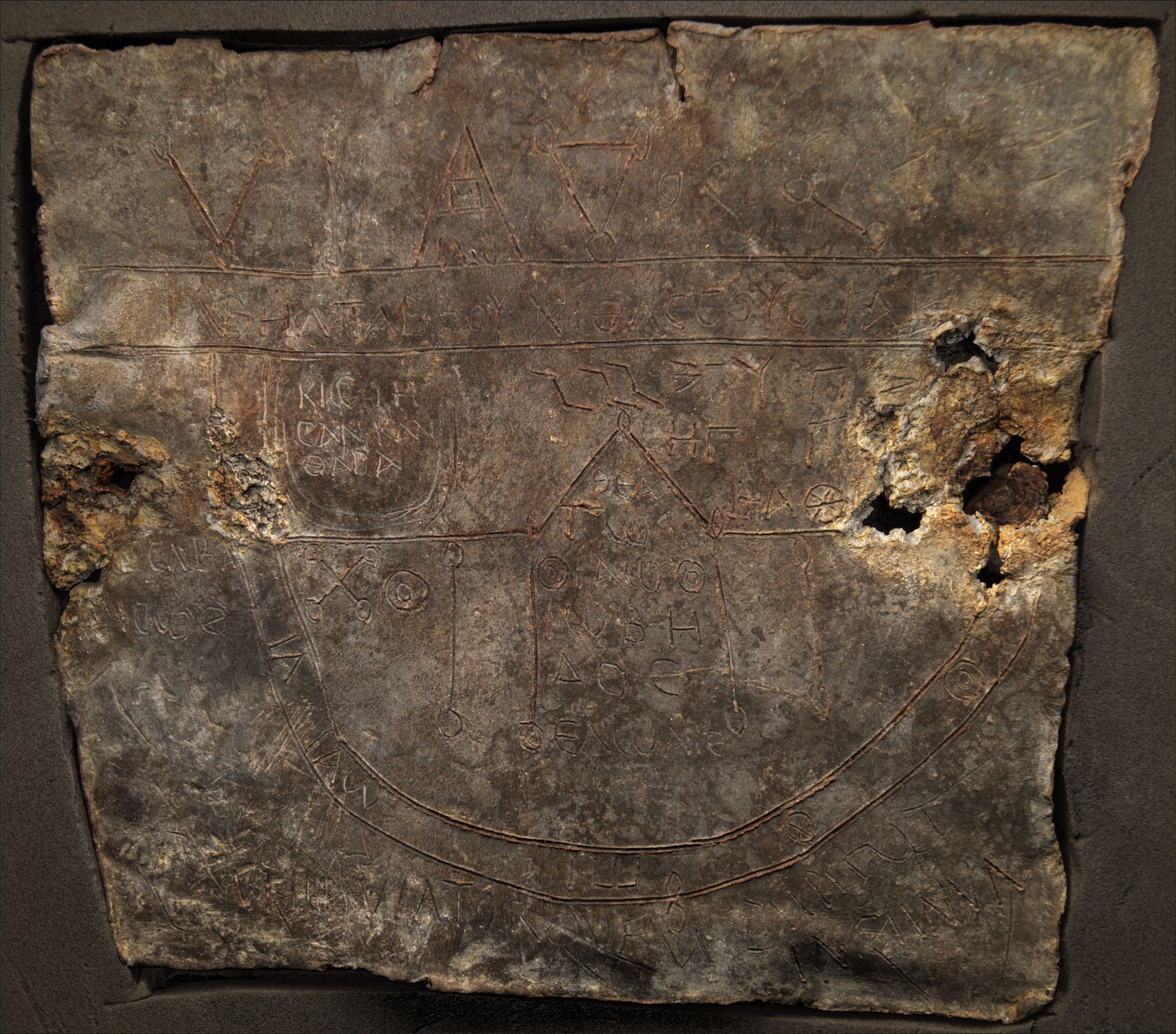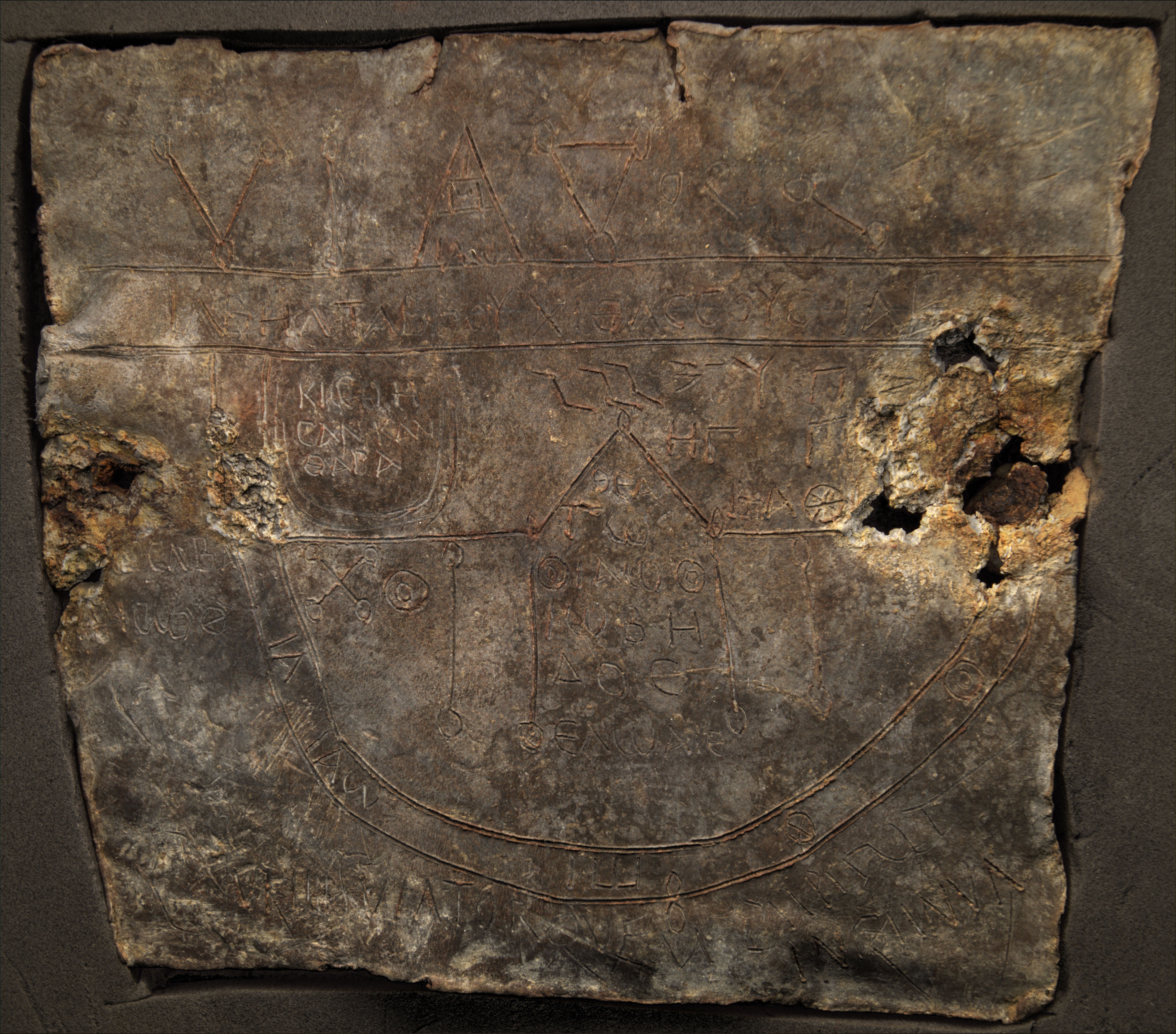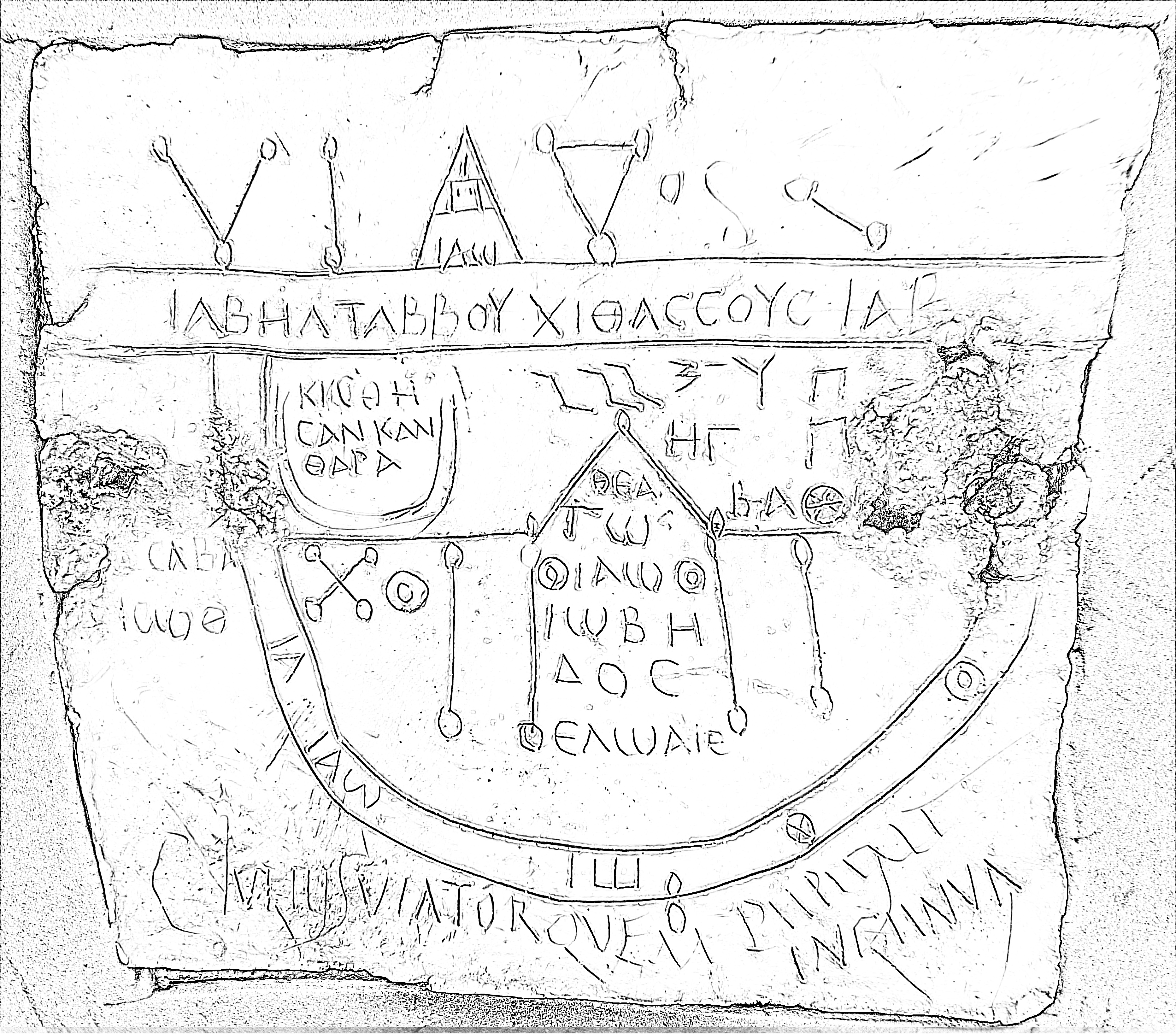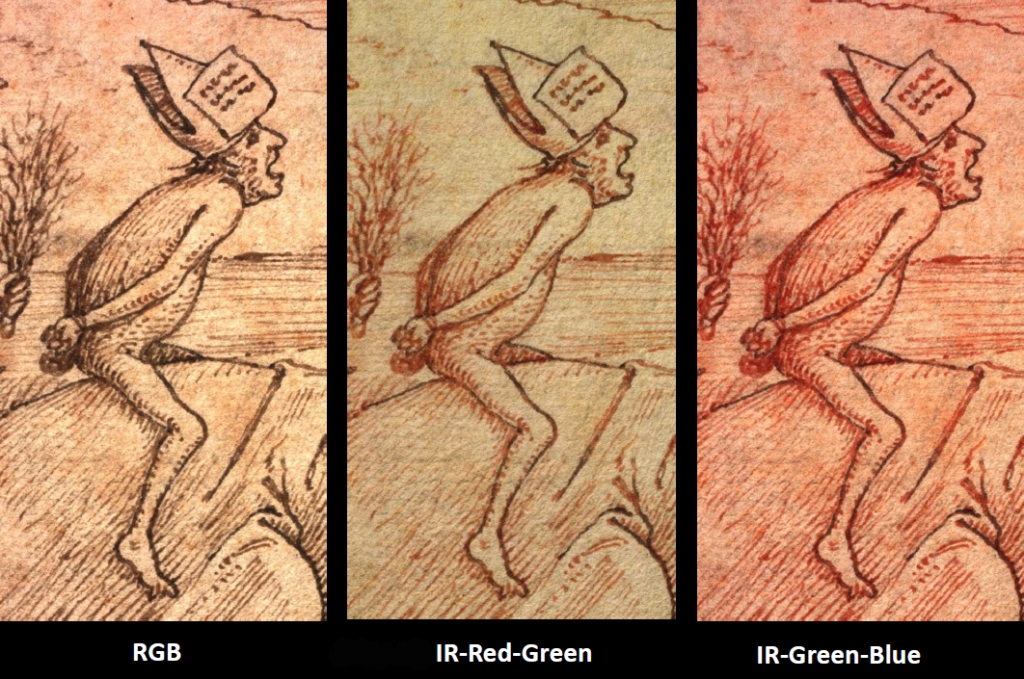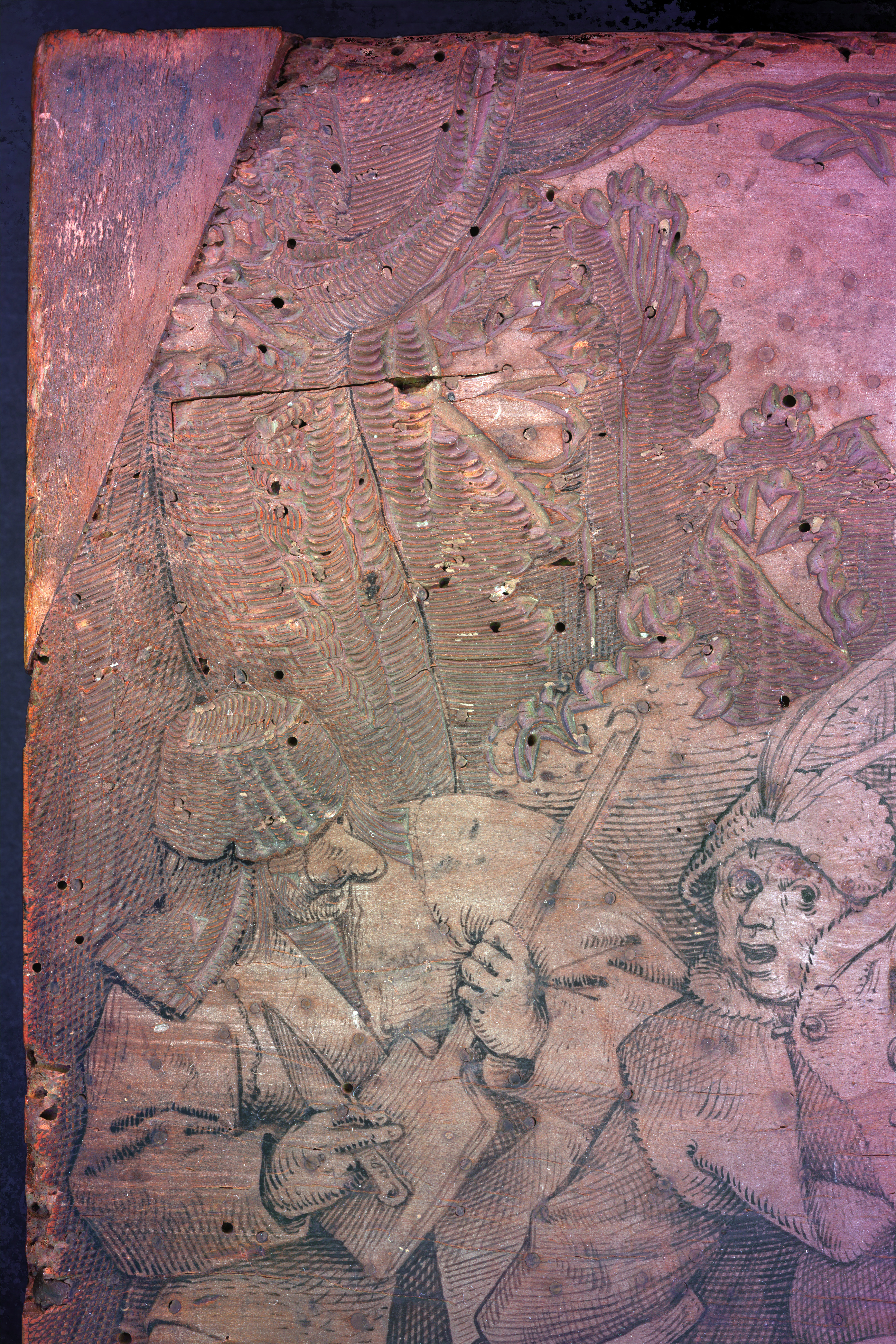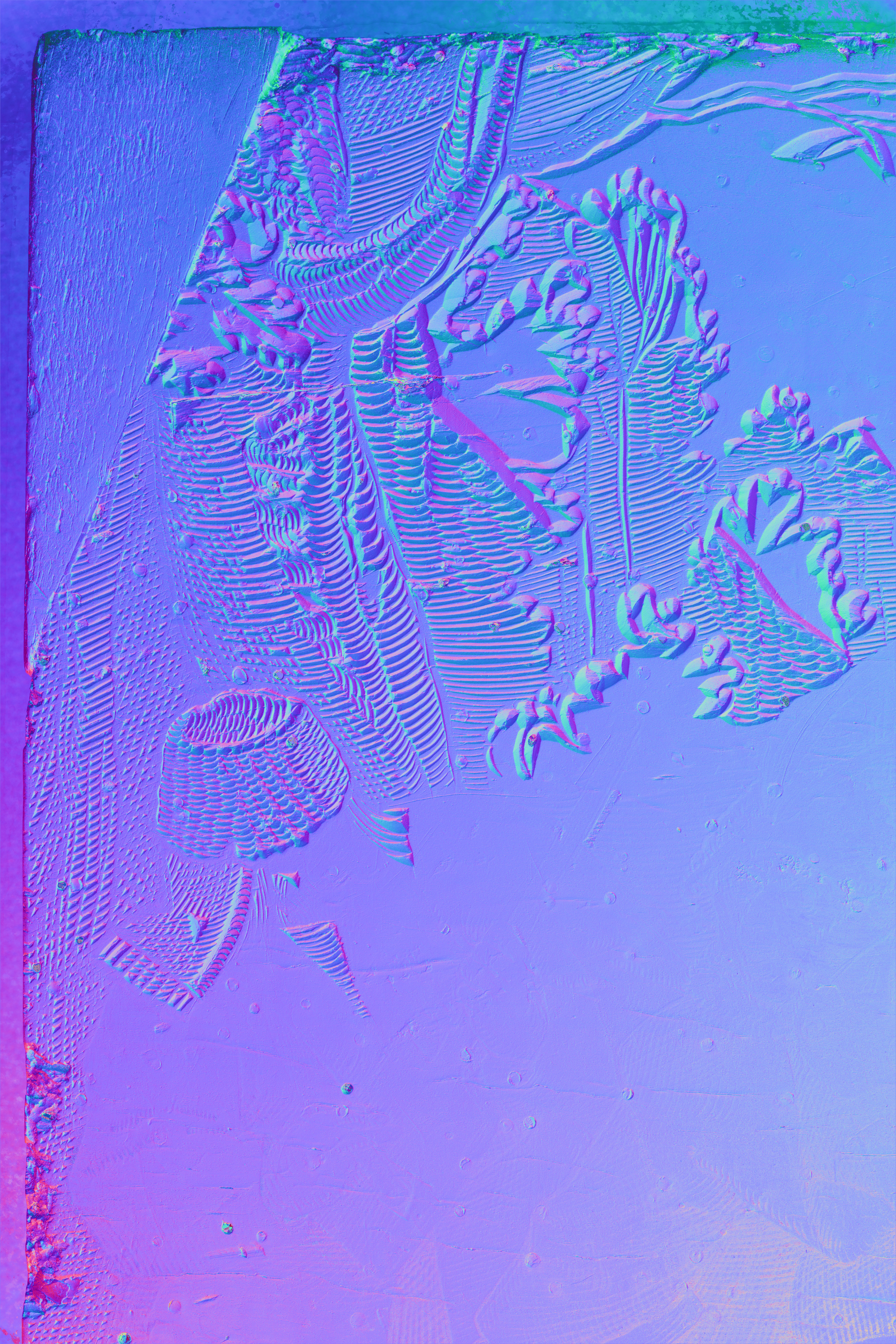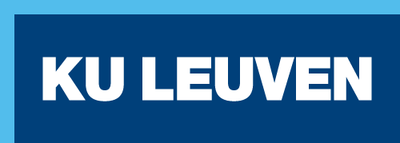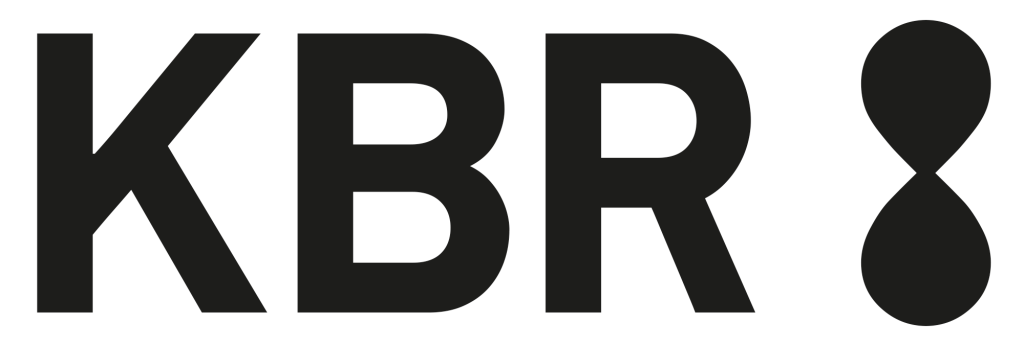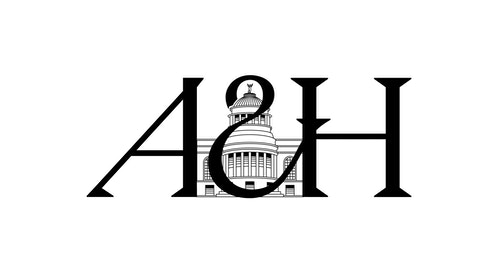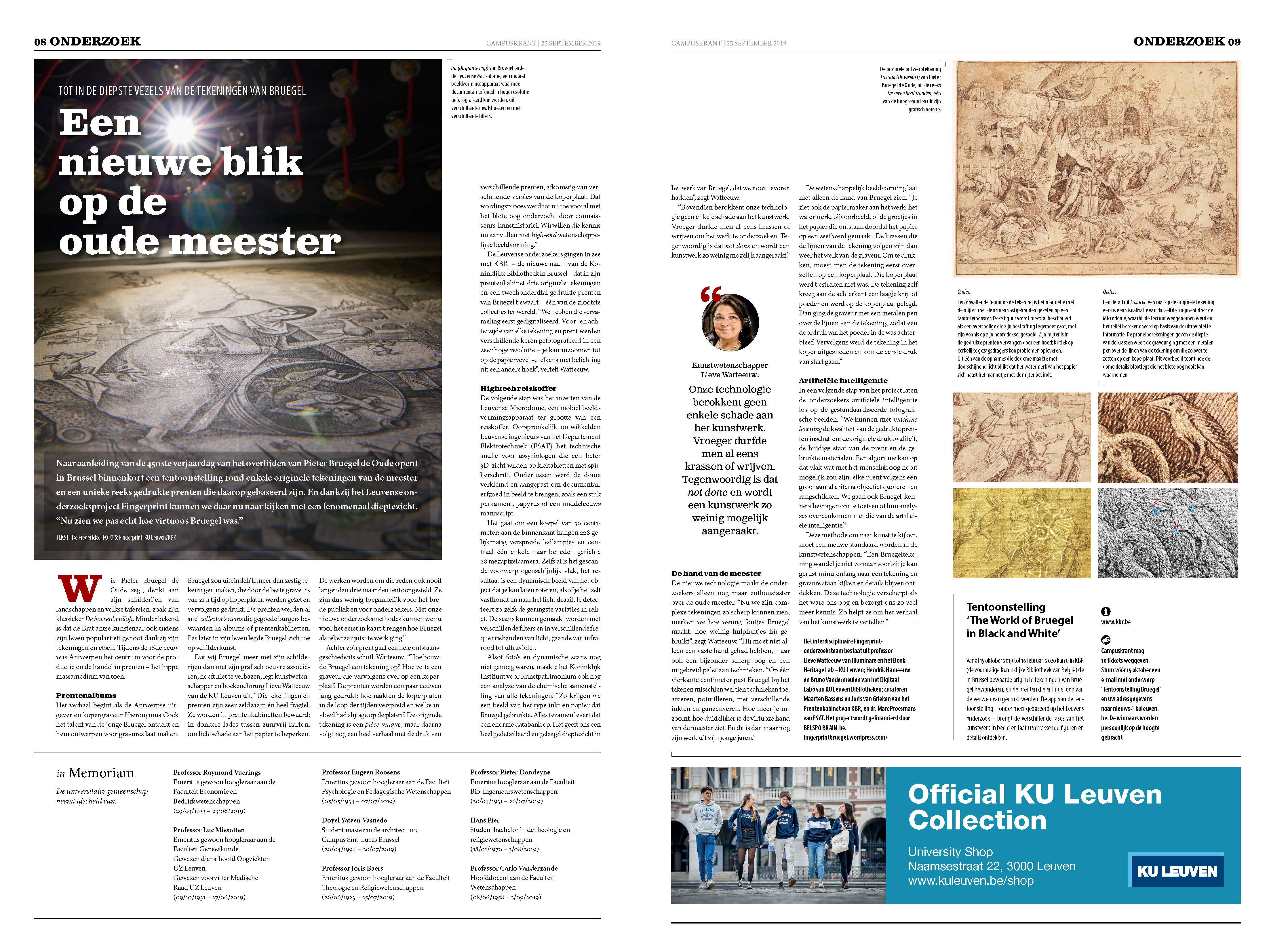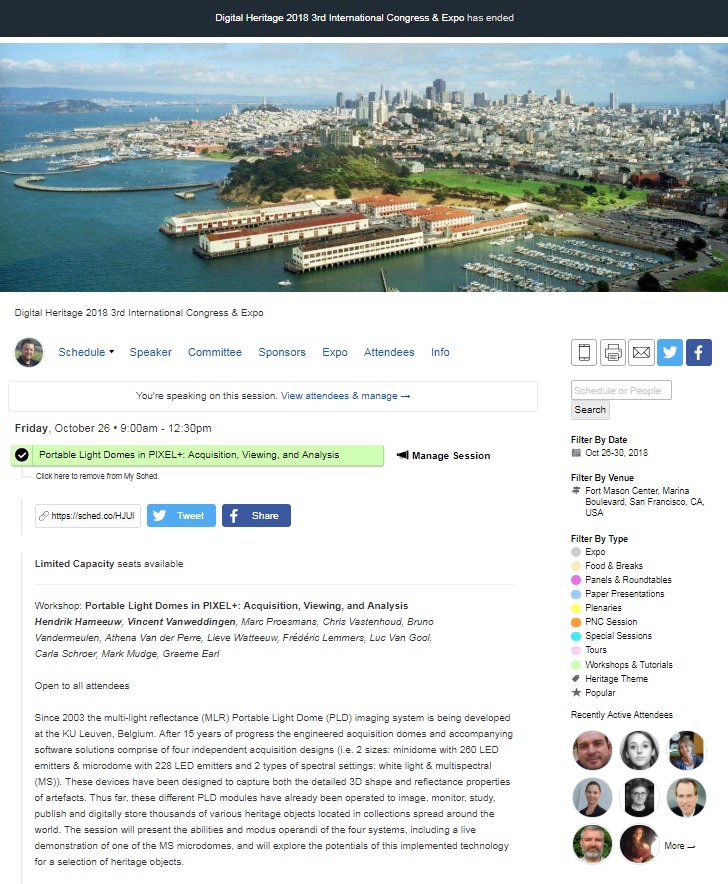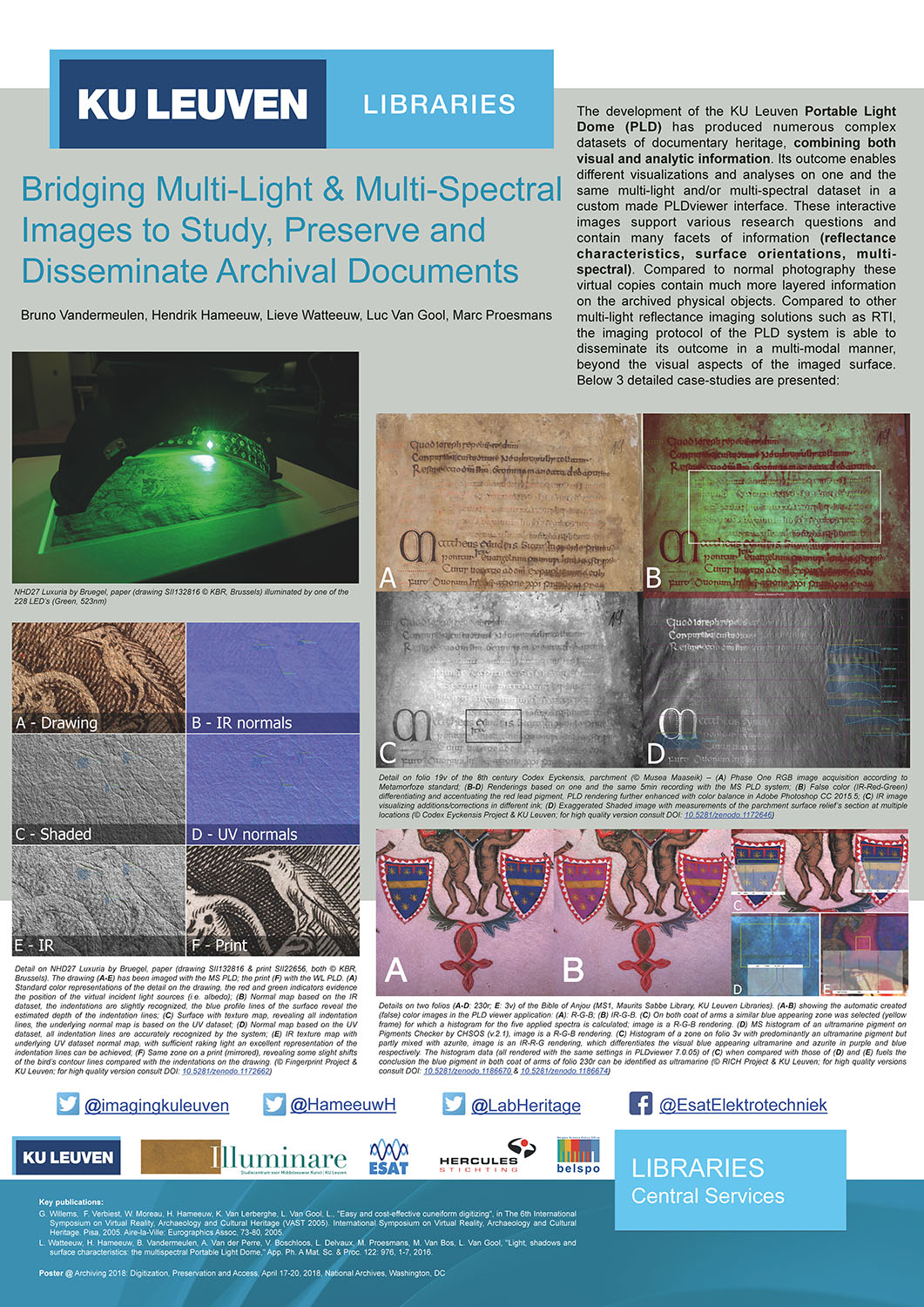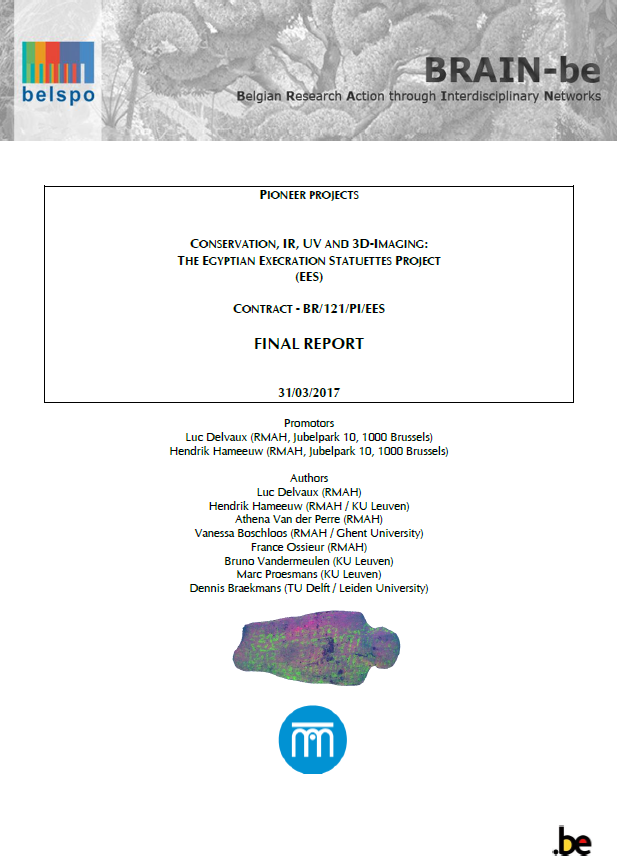press releases in English, Dutch, French
Together with the Art & History Museum and the Royal Library of Belgium (KBR), KU Leuven is launching an online open access application to view heritage objects dynamically and interactively online. This pixel+ viewer allows you to view centuries-old objects in a different light and reveal hidden details.
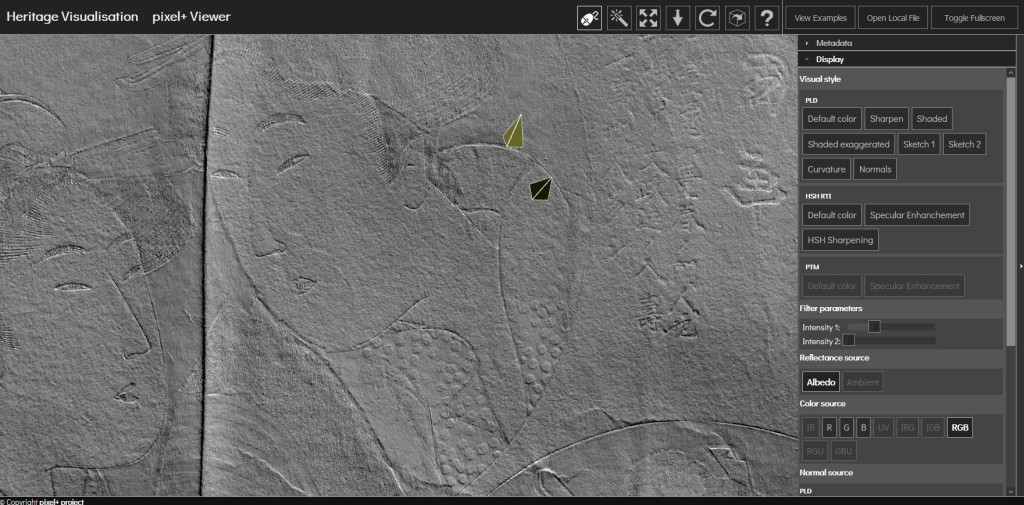 Japanese print on paper (© KU Leuven Libraries collections) in the pixel+ viewer
Japanese print on paper (© KU Leuven Libraries collections) in the pixel+ viewer
As a result of the Corona crisis, museums and other heritage institutions today have little or no physical access, both in Belgium and abroad. It puts the consultation of objects and the study of our past under strong pressure. In part, we can fall back on digitised objects, notes and old publications, but these only represent part of the information, which means that important details can be overlooked. Fortunately, the sector, in collaboration with engineers, has devised solutions to remedy this.
In the heritage sector, the digitisation of objects has long been the focus of attention and experimentation. For the public, this usually results in an online photo that can be zoomed in or on which the contrast can be adjusted. These are purely colour images, standard digital photographs conceal no extra information. However, different types of image scanners register a lot more characteristics of a surface than just the colour. Being able to visualize this information in a handy online tool therefore offers new possibilities for anyone working with heritage objects. Think, for example, of the KBR drawings by Pieter Bruegel the Elder that were recently examined by KU Leuven. The researchers were able to study the paper down to the fibre using their Portable Light Dome (PLD) scanner. They also got a much better view of the extensive range of techniques used by the old master.
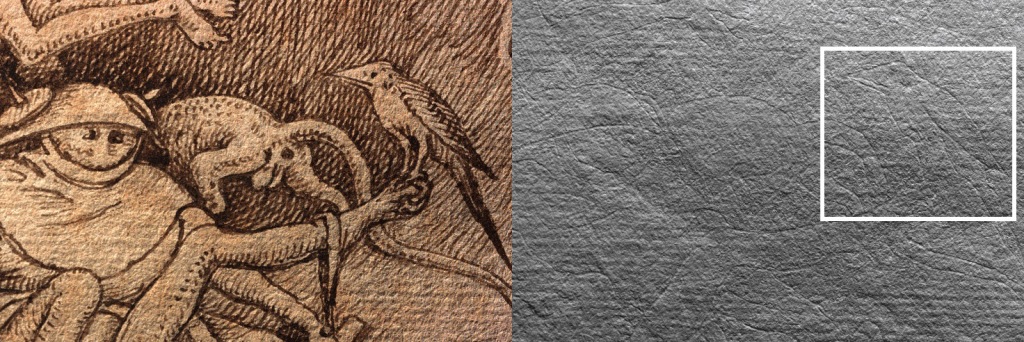 Detail on original Pieter Bruegel the Old drawing from 1557 (KBR: II132816, Luxuria), without colour the imprinted stylus traces of the engraver become visible (© Fingerprint, KBR and KU Leuven).
Detail on original Pieter Bruegel the Old drawing from 1557 (KBR: II132816, Luxuria), without colour the imprinted stylus traces of the engraver become visible (© Fingerprint, KBR and KU Leuven).
Software is the key
Over the past 15 years, KU Leuven researchers, together with various partners from the heritage sector, have developed digital techniques that can visualise objects to an unprecedented level of detail: the PLD scanner. “With this method, they illuminate an object from a large number of angles and take photos of it, the so-called ‘single-camera, multi-light recording’, says Hendrik Hameeuw, co-coordinator of the project at KU Leuven. “The way in which this recording is subsequently processed determines which characteristics of the surface, such as relief or texture, the software can show and thus how the user experiences the object”.
New universal file format
“To be entirely complete, we actually have to look at the file types of these interactive datasets,” says Hameeuw. Most heritage institutions calculate and store these types of images of their heritage with a specific image format, usually RTI/HSH. The software developed in Leuven works with PLD files (ZUN, CUN) that have extra functionalities compared to those RTI/HSH files. Pixel+ now makes this way of calculation available to the whole world, not only by offering it online, but also by introducing a new kind of container file for it: glTF. “Compare it with an ordinary photo on your computer. It will probably be a JPEG or GIF file. But if you want to work with it in Photoshop, the program will turn the same image into a PSD file”. These glTFs are compatible with both the Leuven PLD and the RTI/HSH files. “With this we offer a new universal standard for this kind of images and we also open them immediately via the online pixel+ viewer, a kind of free photoshop for ‘single-camera, multi-light recording’ images”. This allows both RTI/HSH and PLD files to be studied and compared within the same program for the first time.
A new world
Pixel+ extracts a lot of extra information from the available data. The objects, such as old coins, miniatures or paintings, suddenly acquire extra dimensions after hundreds of years, which can be used for research on these objects to gain new insights. Especially in the field of 3D (geometry) and the correct understanding of the reflections of light on an object, the Leuven software is taking major steps forward.
“The technology is interesting for many objects, from clay tablets over coins to paintings or medieval manuscripts,” explains Hameeuw. “The software allows, among other things, the objects to be viewed virtually with different incidence of light, the relief to be mapped at pixel level or a 3D visualisation to be generated”. Frédéric Lemmers of the KBR Digitisation Department joins in: “By even combining it with multi-spectral imaging, researchers recently discovered that the heads of some figures in KBR’s 13th-century Rijmbijbel were painted over at a later date.” At the Art & History Museum, the technology was used to make heavily weathered texts on almost 4,000-year-old Egyptian figurines readable again.
Same detail of illumination on folio 106 (verso) in the Rijmbijbel of Jacob van Maerlant (MS15001, ca. 1225-1291) with varying visualizations of multi-spectral PLD dataset, note the red lines around the heads (= later additions) (© KBR and KU Leuven).
Institutions from all over the world, from the Metropolitan Museum of Art in New York (USA) to the Regionaal Archeologisch Museum a/d Schelde in Avelgem (Belgium), will be able to upload, consult and study their own datasets or files in pixel+. The software converts the information according to various new standards and allows users to access the virtual heritage objects interactively. “This development really is a milestone for the heritage sector”, emphasises Chris Vastenhoud, promoter of the project from the Art & History Museum. “A whole new world will open up for heritage institutions worldwide. They will be able to document and share a lot of additional information in order to communicate about the objects in their collections”.
Pixel+ is available to everyone at http://www.heritage-visualisation.org with examples of objects from the collections of the Art & History Museum, KBR and KU Leuven.
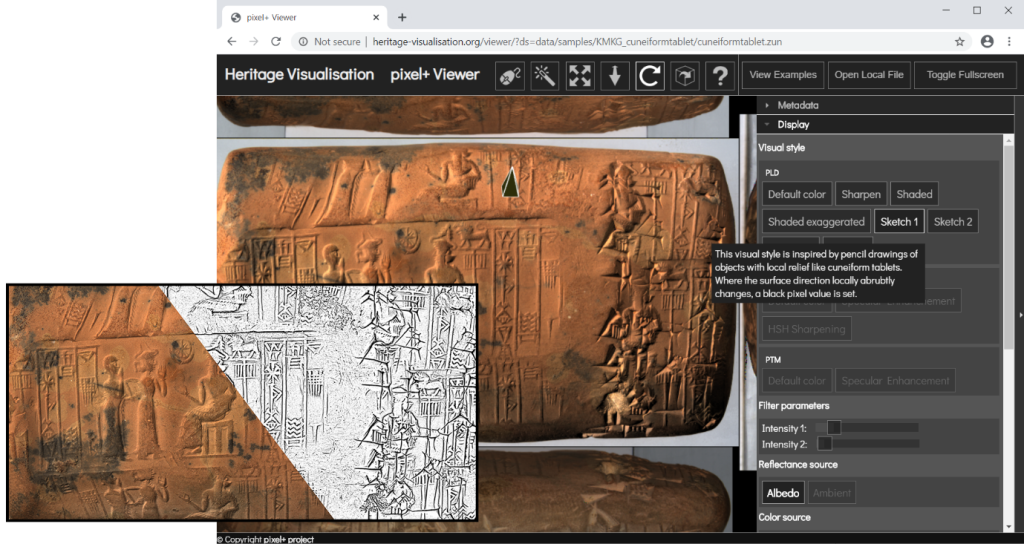
The online pixel+ viewer with an example of a cuneiform tablet from the collection of the Museum Art & History, Brussels. (© Art & History Museum and KU Leuven).
The project is a collaboration between Art & History Museum, KU Leuven Department of Electrical Engineering, KU Leuven Illuminare, KU Leuven Libraries Digitisation and KBR; and was funded by the Federal Science Policy Office (BELSPO) through the BRAIN-be programme (Pioneer projects).
At the beginning of April 2020, the pixel+ project staff already presented their results during the online (as a result of Corona) SPIE conference. As a result, the paper below was published:
Vincent Vanweddingen, Hendrik Hameeuw, Bruno Vandermeulen, Chris Vastenhoud, Lieve Watteeuw, Frédéric Lemmers, Athena Van der Perre, Paul Konijn, Luc Van Gool, Marc Proesmans 2020: Pixel+: integrating and standardizing of various interactive pixel-based imagery, in: Peter Schelkens, Tomasz Kozacki (eds.) Optics, Photonics and Digital Technologies for Imaging Applications VI, Proc. of SPIE Vol. 11353, 113530G. (DOI: 10.1117/12.2555685)
read paper – see presentation
Additional examples can be viewed and created at http://www.heritage-visualisation.org/examples.html
